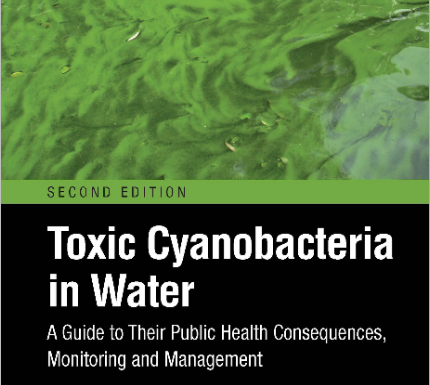
Hi all…while it is a bit early in the year to be thinking about cyanobacterial blooms I thought I would draw your attention to the release of the second edition of a CRC Press book entitled “Toxic Cyanobacteria in Water-A Guide to Their Public Health Consequences, Monitoring and Management.” It was only made accessible this week so it is as up-to-date as it can be. It is open access and 858 pages in length-the download is almost 25 MB but there is an option to download individual chapters.
I have reproduced the table of contents below as it is so comprehensive it is difficult to easily summarize. Briefly, it presents the current state of knowledge on cyanobacteria and cyanotoxins, and from a drinking water treatment perspective it provides guidance for monitoring and controlling risks in source water and at intakes. It also addresses laboratory methods for the determination of cyanobacteria and cyanotoxins, as well as their impacts on human health through water-related exposure pathways. Chapter 10 “describes the current state of knowledge about the treatment measures that are available for the removal of cyanobacteria and the toxins they produce, the monitoring regimes that can be undertaken to ensure the optimum performance of those measures, as well as validation programmes that can be run to ensure optimum choice and design of measures.”
Chapter 15, which deals with public surveillance, public communication, and participation may be helpful. “The role of the responsible (health) authority is likely to focus on surveillance, including independent verification of water quality and ideally, assessment that Water Safety Plans (WSPs) are being implemented effectively, rather than the day-to-day on-site management and monitoring. Operators of drinking water supplies and managers of recreational sites or occupational water use are required for the day-to-day management (and assessment) of risks, including those from cyanotoxins. However, the role of authorities may be broader where regulations are sparse, water quality requirements such as limits for cyanotoxin concentrations have not been defined, institutional capacity is limited or the surveillance of water-use systems is challenging because of their high number, geographic spread or remoteness. Such situations may require an active role of public authorities in management, for example, in the development of WSPs (see Chapter 6). This chapter focuses on the role of public authorities in surveillance, the development and implementation of Incident Response Plans (IRPs) as well as in communicating risks to the public.”
Bill
__________________________________________________________________________________________
Toxic Cyanobacteria in Water-A Guide to Their Public Health Consequences, Monitoring and Management
Chorus, I., & Welker, M. (Eds.). (2021). Toxic Cyanobacteria in Water: A Guide to Their Public Health Consequences, Monitoring and Management (2nd ed.). CRC Press. https://doi.org/10.1201/9781003081449
Chapter 2 – Cyanobacterial toxins
Chapter 3 – Introduction to cyanobacteria
Chapter 4 – Understanding the occurrence of cyanobacteria and cyanotoxins
Chapter 5 – Exposure to cyanotoxins
Chapter 6 – Assessing and managing cyanobacterial risks in water-use systems
Chapter 8 – Assessing and controlling the risk of cyanobacterial blooms: Waterbody conditions
Chapter 9 – Managing cyanotoxin risks at the drinking-water offtake
Chapter 10 – Controlling cyanotoxin occurrence
Chapter 11 – Planning monitoring programmes for cyanobacteria and cyanotoxins
Chapter 13 – Laboratory analyses of cyanobacteria and water chemistry
Chapter 14 – Laboratory analysis of cyanobacterial toxins and bioassays
Chapter 15 – Public health surveillance, public communication and participation
________________________________________________________________________________________





